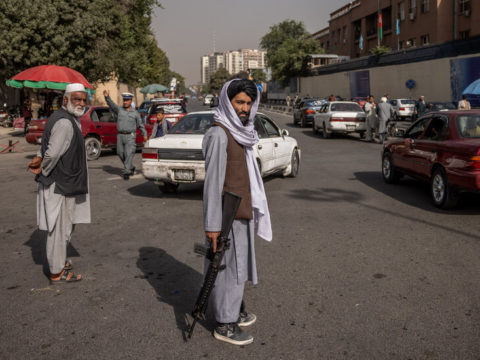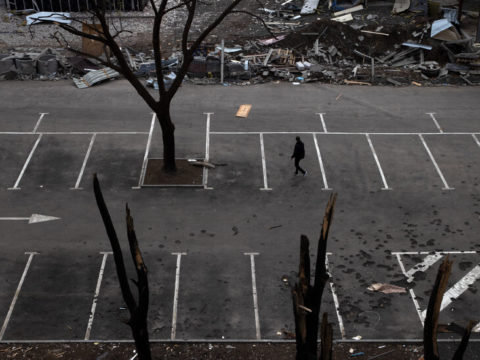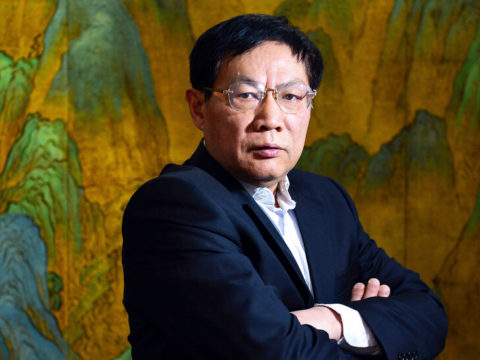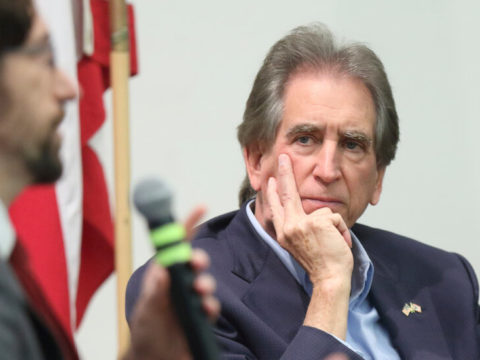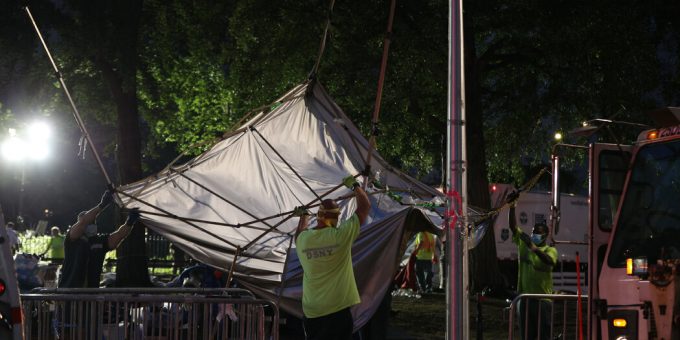
Police officers in riot gear cleared out the “Occupy City Hall” encampment in City Hall Park near dawn on Wednesday, shutting down a monthlong demonstration against police brutality that recently had attracted numerous homeless people.
A phalanx of officers in helmets started closing in on dozens of protesters and homeless people shortly before 4 a.m., moving in lock-step behind a wall of plastic shields, according to protesters and videos posted on social media.
Seven people were arrested after sporadic clashes erupted between officers and residents of the camp, officials said. One protester was taken into custody after the police said he threw a brick at an officer.
As the police moved through the camp, officers took down a series of tarps and makeshift tents that demonstrators and several homeless people had been living in for weeks and tossed them into city garbage trucks.
By 8 a.m., city cleaning crews had arrived to scrub anti-police graffiti from sidewalks, subway entrances and the walls of several historic buildings in the area, including the Manhattan Surrogate’s Court across the street from City Hall.
The graffiti on the courthouse and other government landmarks — much of it obscene — became symbolic of the continuing unrest in the city. Police officials said the cleanup at and around the protest site could take weeks to finish.
Police union leaders and some local residents complained that the city had waited too long to take the graffiti down.
“The graffiti is just another manifestation of the city in decline,” Gov. Andrew M. Cuomo said on Wednesday. Mr. Cuomo urged city officials to clean it up as quickly as possible, saying, “What does it take? It’s spray paint.”
Speaking to reporters Wednesday morning also, Mayor Bill de Blasio said that the decision to shut down the camp had been made around 10 p.m. on Tuesday because of “health and safety.”
“What we saw change over the last few weeks was the gathering there got smaller and smaller, was less and less about protest and more and more of an area where homeless folks were gathering,” the mayor said.
At a separate news conference, Raymond Spinella, the police department’s chief of support services, said that several hundred officers moved into the park at about 3:40 a.m. after giving the protesters camped there a 10-minute warning.
He said the decision to move in on Wednesday had been reached with City Hall and was based on the relatively few number of people in the park.
A similar raid was launched almost a decade ago to dismantle the Occupy Wall Street camp in Zuccotti Park in Lower Manhattan.
In November 2011, dozens of officers marched into the park at 1 a.m., rousting protesters who had been there since September and removing their tents, tarps and belongings.
On Wednesday, Yessenia Benitez, 29, of Harlem, said she saw about 100 officers converge on City Hall Park well before sunrise, announcing to protesters that they were breaking the law and ordering them to leave at once.
Most people dispersed, she said, but a small group watched the police operation from Foley Square, a few blocks to the north.
A few protesters said the police had told them that they would be able to return to the park to retrieve their belongings. But when they went back everything — their water, clothing and personal effects — had been tossed into sanitation trucks, they said.
The occupation began on June 23 when about 100 people set up camp on a small patch of grass to the east of City Hall with the mission of bringing pressure on the City Council to cut the New York Police Department’s funding at an upcoming vote before the July 1 budget deadline.
Within a week, the small squatters’ colony grew into a ramshackle community with food service, a hand-sanitizing station and even a library where campers could go to hear lectures on mass incarceration and the school-to-prison pipeline.
Hundreds slept in the park each night, festooning benches and fences with signs decrying racism and police brutality. The plaza’s sidewalks became a kind of horizontal gallery of protest art.
The project reached its peak on June 30 when thousands crowded into the plaza after dark to watch the Council vote on a giant video screen. While the Council ultimately decided to shift nearly $1 billion away from the police, many of the protesters expressed disappointment, wanting deeper cuts. Most went home within days.
Those that remained quickly assumed a new responsibility: caring for the dozens of homeless people who had flocked to the site — which protesters started calling Abolition Park — for its free meals, open-air camping and communal sensibility.
While organizers said they felt a duty to tend to some of the city’s most vulnerable residents, problems soon arose. Fights broke out. Passers-by were harassed.
Some local residents, even those who said they supported the project’s politics, started to complain that the once-peaceful compound had turned into a shantytown marred by violence and disorder.
The camp, just feet from City Hall, had presented a thorny political problem for Mayor Bill de Blasio. He has been routinely criticized by the demonstrators and his Black supporters since the larger, citywide protests, prompted by the death of George Floyd in Minneapolis, started in late May.
The decision to close the encampment came only days after President Trump sent teams of heavily-armed federal agents to Portland to protect federal property and to subdue protests there that have turned violent on occasion.
Mr. Trump has also threatened to send agents to New York and other cities.
Though the occupation at City Hall was over, some protesters said it was not a fatal blow to their cause.
“It’s a reminder that the fight isn’t over, and you know what, I’m glad that they reminded us now,” said Gabe Quinones, 22, who worked at the camp as a volunteer “de-escalator,” settling disputes and soothing frayed tempers. “We’ll go somewhere else with everything that we learned here and continue our work.”

